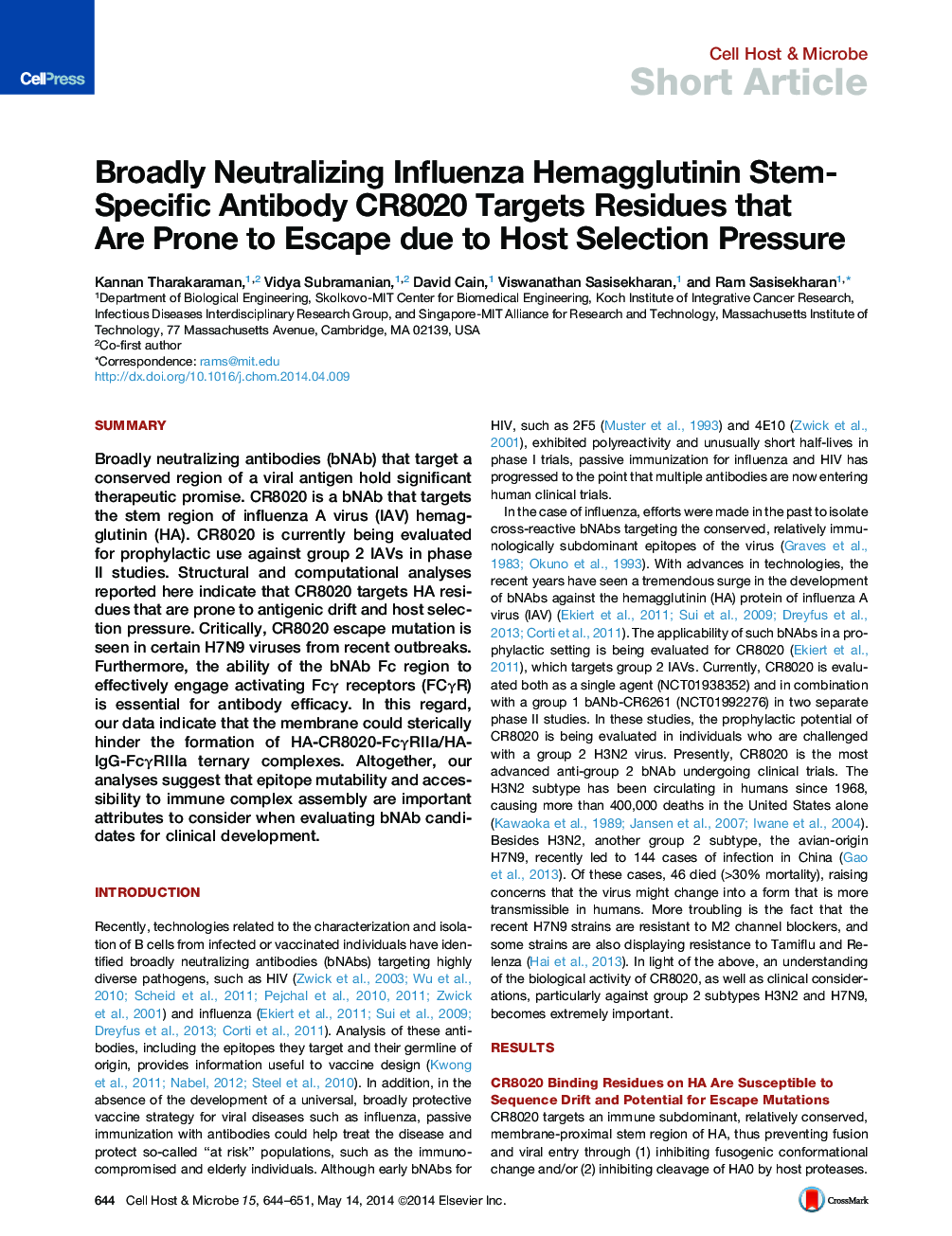| Article ID | Journal | Published Year | Pages | File Type |
|---|---|---|---|---|
| 4361002 | Cell Host & Microbe | 2014 | 8 Pages |
•HA residues targeted by the CR8020 antibody are susceptible to host selection pressure•Influenza HA mutations have the potential to negatively impact CR8020 activity•Known CR8020 escape mutation is found in an H7N9 outbreak virus•Membrane may sterically hinder FcγR binding to Fc within the HA-CR8020 immune complex
SummaryBroadly neutralizing antibodies (bNAb) that target a conserved region of a viral antigen hold significant therapeutic promise. CR8020 is a bNAb that targets the stem region of influenza A virus (IAV) hemagglutinin (HA). CR8020 is currently being evaluated for prophylactic use against group 2 IAVs in phase II studies. Structural and computational analyses reported here indicate that CR8020 targets HA residues that are prone to antigenic drift and host selection pressure. Critically, CR8020 escape mutation is seen in certain H7N9 viruses from recent outbreaks. Furthermore, the ability of the bNAb Fc region to effectively engage activating Fcγ receptors (FCγR) is essential for antibody efficacy. In this regard, our data indicate that the membrane could sterically hinder the formation of HA-CR8020-FcγRIIa/HA-IgG-FcγRIIIa ternary complexes. Altogether, our analyses suggest that epitope mutability and accessibility to immune complex assembly are important attributes to consider when evaluating bNAb candidates for clinical development.
Graphical AbstractFigure optionsDownload full-size imageDownload high-quality image (267 K)Download as PowerPoint slide
